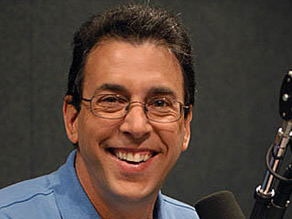ATLANTA, Georgia (CNN) -- Do you need to borrow to fund a college education for yourself or your child? Be sure you're taking my "Clark Smart" approach to borrowing.

Clark Howard: If a four-year college is too cost prohibitive, try a two-year institution at a fraction of the cost
Subsidized Stafford loans are the single best source of money you can borrow. The interest is picked up by the federal government -- courtesy of your fellow taxpayers -- while you're in school and for a six-month grace period following graduation.
Once the loans go into repayment, subsidized Stafford loans taken out during the 2009-10 school year carry a fixed interest rate of 5.6 percent. The rate will be lower still at 4.5 percent for loans originating during the next school year, and all the way down to 3.4 percent the following year.
There are, however, limits to the amount you can borrow. Freshman can get up to $3,500 annually; sophomores can borrow $4,500 each year; and juniors and seniors cap out at $5,500.
Once you exhaust your subsidized Stafford stockpile, you want to move on to unsubsidized Stafford loans, which are now offered at 6.8 percent. Remember, though, to borrow as little as possible because the interest on these unsubsidized loans accumulates while you're in school. ![]() Watch smart choices when paying back the loans »
Watch smart choices when paying back the loans »
As a third option, parents can take out PLUS loans, which are issued at a fixed rate of 8.25 percent.
Visit FAFSA.ed.gov to determine your eligibility for all these loan options.

At noon and 4 p.m. ET Saturdays and Sundays on HLN
What's one type of loan you do not want to take out? Private student loans. Back in 2005, the private student loan industry used its political influence to gain the right to use any and all tactics (short of threatening bodily harm or actually causing it) in their efforts to collect money.
In fact, private student loans typically can't even be dismissed in bankruptcy.
Remember my rule of thumb when it comes to determining what level of borrowing you can comfortably handle: Do not take on a total loan amount that exceeds the likely first-year earnings in your field.
If college is still too cost-prohibitive after you've gotten all the financial aid and loans you can, I'd love for you to think about starting your degree at a two-year community college. The cost of a community college can be as little as one-tenth to one-twentieth that of a private college, as I discovered when I researched schools with my eldest daughter.
Let's say you decide to do your first two years at a community college. People often worry about the lack of prestige associated with these kinds of schools. But most employers only look at the name of the traditional college that issues your degree after you've put in your time at a community school.
In fact, an employer might even prefer someone who worked their way through a community college and had to struggle financially. Doesn't that show more fortitude in a job candidate than the person who cruised through a 4-year college on the silver-spoon plan?
Don't Miss
And for those of you already dealing with paying off student loan debt, there's a radical change coming that I want you to know about.
Effective July 1, an income-based repayment plan (IBR) became available to borrowers with Stafford loans and Grad PLUS loans.
Under the new program, your payment will be based on your current income and family size. That means your monthly payment could be an unprecedented zero dollars if you qualify! Contact your lender to see if you qualify and to apply for the IBR.

In addition to the IBR, other new provisions that went into effect July 1 include loan forgiveness options for certain workers.
Nonprofit workers and some government employees are eligible for loan forgiveness after making on-time monthly payments for 10 years. If you work in the traditional for-profit sector, it will take 25 years of on-time payments before you're eligible for loan forgiveness. Visit LoanConsolidation.ed.gov for more information.
All About Personal Finance

 Sit tight, we're getting to the good stuff
Sit tight, we're getting to the good stuff